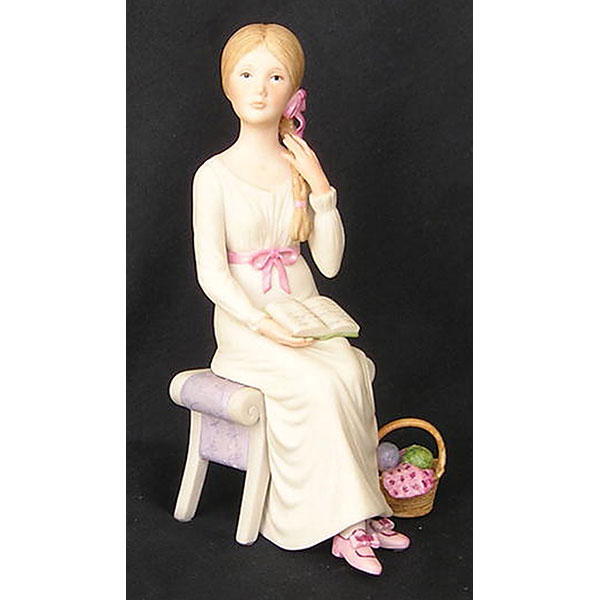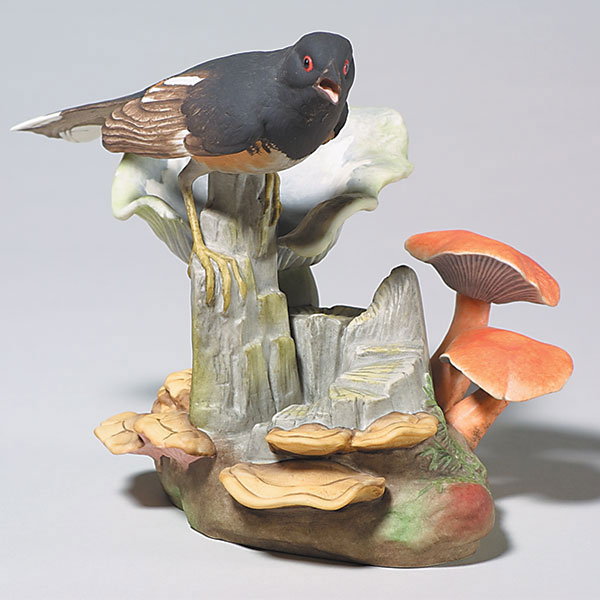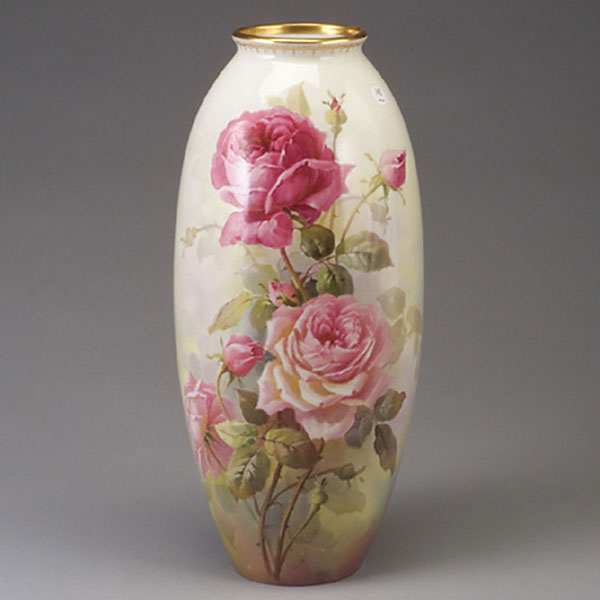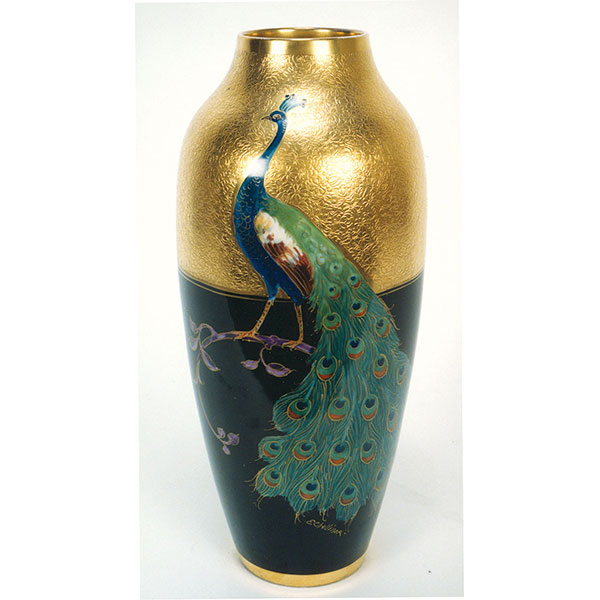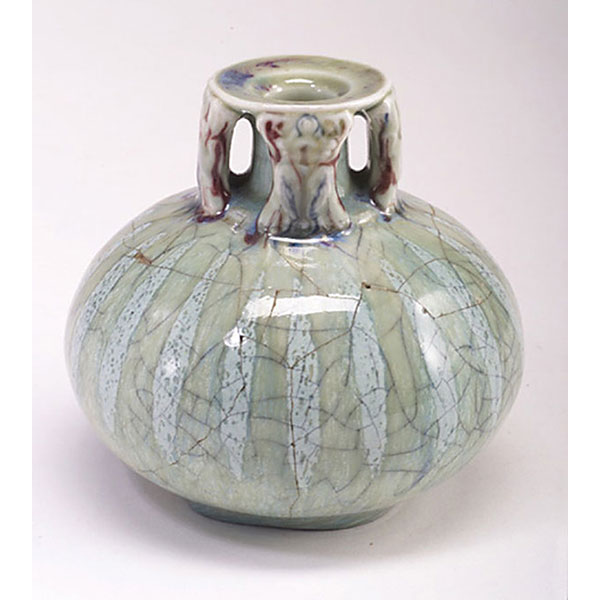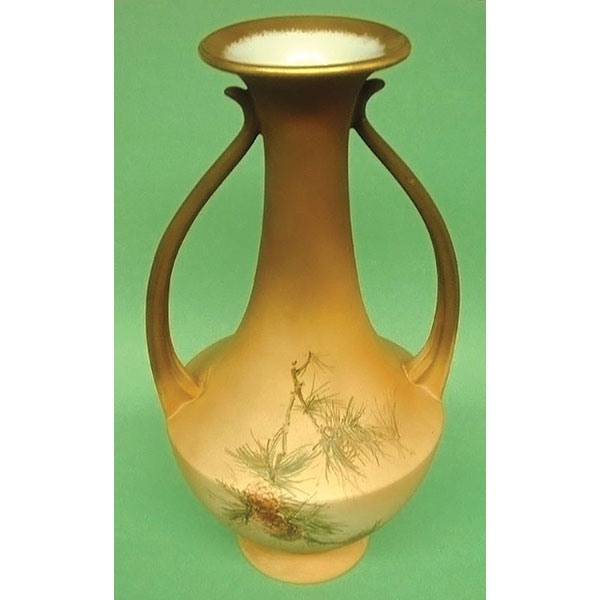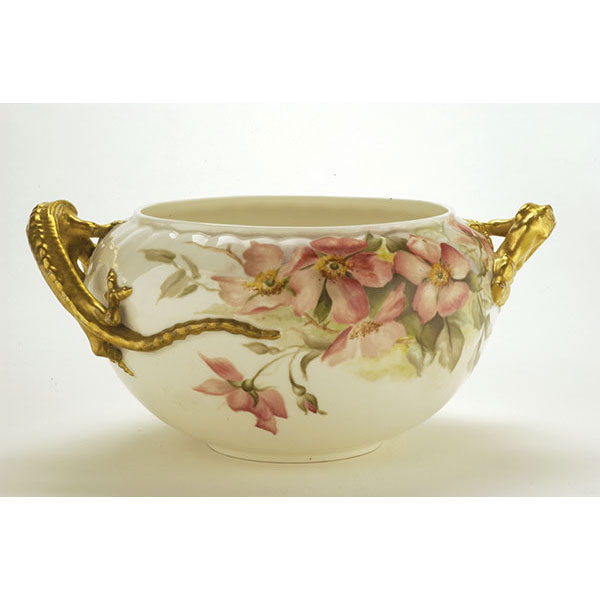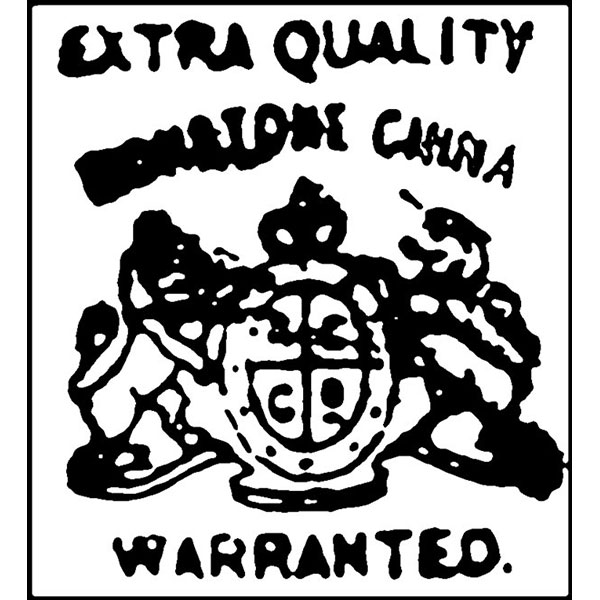Identification Guides
American Porcelain
Porcelain was first made in America about 1738. During the next decades, more potters made porcelain, but none of the businesses lasted more than ten years. By the middle of the nineteenth century, Jersey Porcelain and Earthenware Company, Tucker and Hemphill, Smith Fife and Company, and Charles Cartlidge had all closed. Late in the century, porcelain was again being produced. Knowles, Taylor and Knowles (1870-1929) of East Liverpool, Ohio, made mostly pottery and dinnerware, but it also produced a porcelain called Lotus ware from about 1891 to 1896. Onondaga Pottery of Syracuse, New York, was making Imperial Geddo porcelain by 1891, and it continued manufacturing porcelain and other ceramics during the 1900s under several names. It is now Syracuse China Corporation. Trenton, New Jersey, was home to several important porcelain manufacturers. Ceramic Art Company, founded in 1889, became Lenox, Inc. in 1906 and is still making quality porcelains. Ott and Brewer, Cook Pottery Company, Greenwood Pottery Company, and Willetts Manufacturing Company were other Trenton porcelain makers. These early porcelain firms made expensive pieces that often had hand-painted or hand-applied decorations. Their best work was as good as or better than most of the Japanese, English, and German porcelains of the time. United States firms continued making porcelains, especially dinnerware, during the twentieth century. By the 1970s international competition led to the closing of many small companies, particularly in Ohio and New Jersey. By 2000 most dinnerware sold in America was made in England or Japan, or in Hong Kong, Thailand, Sri Lanka, Bangladesh, and other countries with low labor costs.
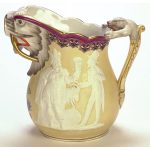
Union Porcelain Works made some fantasy pieces like this "gamblers" pitcher. King Gambrinus, the god of beer, is shown on this side of the pitcher. The other side shows a gambler. The spout and handle are imaginary animals.
